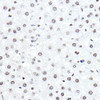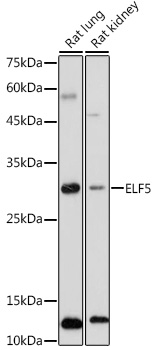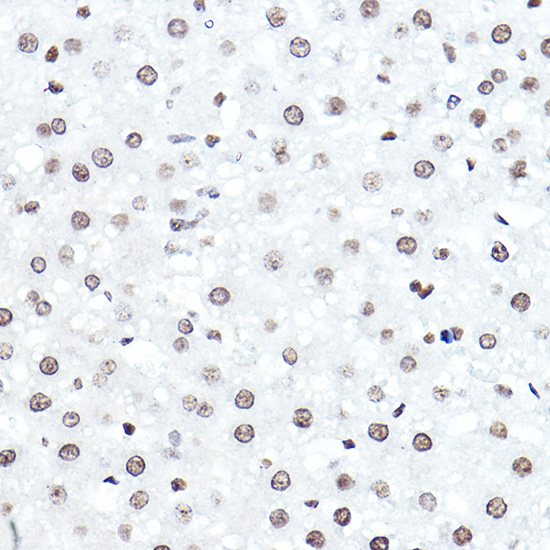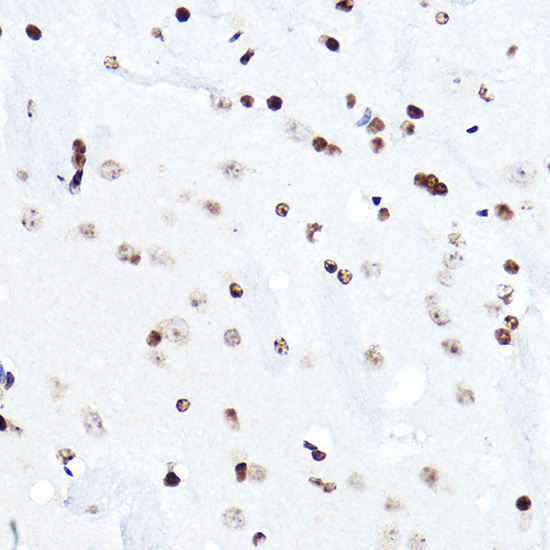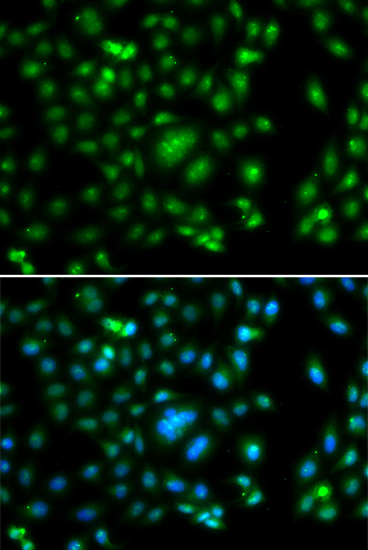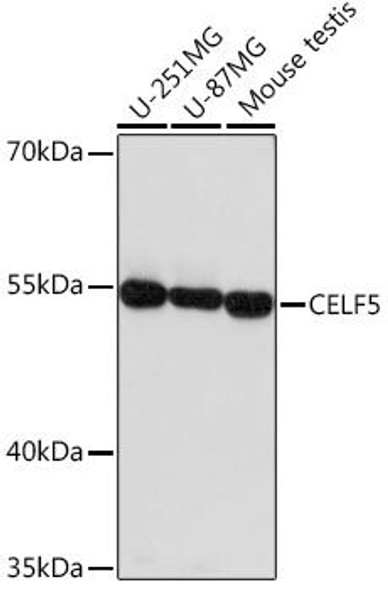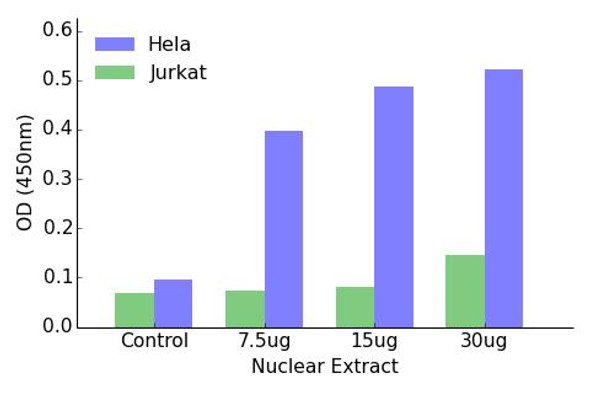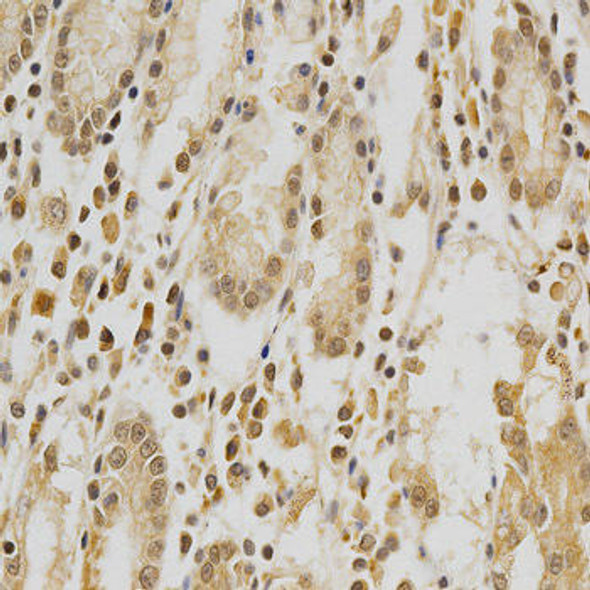Description
Anti-ELF5 Antibody (CAB7181)
The ELF5 Polyclonal Antibody (CAB7181) is a high-quality research tool designed for studying the ELF5 protein, a transcription factor that plays a key role in mammary gland development and differentiation. Raised in rabbits, this antibody is specifically reactive with human samples and has been validated for use in Western blot applications.ELF5 is a critical regulator of mammary gland development, with implications in breast cancer progression and metastasis. By binding to the ELF5 protein, this antibody allows for the detection and analysis of ELF5 expression in various cell types, making it an essential tool for researchers studying mammary gland biology, breast cancer, and other related fields.
Understanding the function of ELF5 is essential for unraveling the complex mechanisms underlying mammary gland development and breast cancer pathogenesis. By targeting ELF5 with this polyclonal antibody, researchers can gain valuable insights into the role of this transcription factor in normal and disease states, ultimately paving the way for the development of novel therapeutic strategies targeting ELF5 in breast cancer and other diseases.
| Antibody Name: | Anti-ELF5 Antibody |
| Antibody SKU: | CAB7181 |
| Antibody Size: | 20uL, 50uL, 100uL |
| Application: | WB IHC IF |
| Reactivity: | Human, Mouse, Rat |
| Host Species: | Rabbit |
| Immunogen: | Recombinant fusion protein containing a sequence corresponding to amino acids 1-170 of human ELF5 (NP_001413.1). |
| Application: | WB IHC IF |
| Recommended Dilution: | WB 1:500 - 1:2000 IHC 1:50 - 1:200 IF 1:50 - 1:100 |
| Reactivity: | Human, Mouse, Rat |
| Positive Samples: | Rat lung, Rat kidney |
| Immunogen: | Recombinant fusion protein containing a sequence corresponding to amino acids 1-170 of human ELF5 (NP_001413.1). |
| Purification Method: | Affinity purification |
| Storage Buffer: | Store at -20'C. Avoid freeze / thaw cycles. Buffer: PBS with 0.02% sodium azide, 50% glycerol, pH7.3. |
| Isotype: | IgG |
| Sequence: | MLDS VTHS TFLP NASF CDPL MSWT DLFS NEEY YPAF EHQT ACDS YWTS VHPE YWTK RHVW EWLQ FCCD QYKL DTNC ISFC NFNI SGLQ LCSM TQEE FVEA AGLC GEYL YFIL QNIR TQGY SFFN DAEE SKAT IKDY ADSN CLKT SGIK SQDC HSHS RTSL QSSH LWEF VR |
| Gene ID: | 2001 |
| Uniprot: | Q9UKW6 |
| Cellular Location: | Nucleus |
| Calculated MW: | 16kDa/18kDa/30kDa/31kDa |
| Observed MW: | 31KDa |
| Synonyms: | ELF5, ESE2 |
| Background: | The protein encoded by this gene is a member of an epithelium-specific subclass of the Ets transcritpion factor family. In addition to its role in regulating the later stages of terminal differentiation of keratinocytes, it appears to regulate a number of epithelium-specific genes found in tissues containing glandular epithelium such as salivary gland and prostate. It has very low affinity to DNA due to its negative regulatory domain at the amino terminus. Several alternatively spliced transcript variants encoding different isoforms have been described for this gene. |
| UniProt Protein Function: | ELF5: Transcriptionally activator that may play a role in regulating the later stages of keratinocytes terminal differentiation. Belongs to the ETS family. 3 isoforms of the human protein are produced by alternative splicing. |
| UniProt Protein Details: | Protein type:Transcription factor; DNA-binding Chromosomal Location of Human Ortholog: 11p13-p12 Cellular Component: nucleus Biological Process: cell differentiation; cell proliferation; regulation of transcription from RNA polymerase II promoter |
| NCBI Summary: | The protein encoded by this gene is a member of an epithelium-specific subclass of the Ets transcritpion factor family. In addition to its role in regulating the later stages of terminal differentiation of keratinocytes, it appears to regulate a number of epithelium-specific genes found in tissues containing glandular epithelium such as salivary gland and prostate. It has very low affinity to DNA due to its negative regulatory domain at the amino terminus. Several alternatively spliced transcript variants encoding different isoforms have been described for this gene. [provided by RefSeq, Jul 2011] |
| UniProt Code: | Q9UKW6 |
| NCBI GenInfo Identifier: | 68565549 |
| NCBI Gene ID: | 2001 |
| NCBI Accession: | Q9UKW6.2 |
| UniProt Secondary Accession: | Q9UKW6,O95175, Q8N2K9, Q96QY3, Q9UKW5, A6XAE6, A8K452 |
| UniProt Related Accession: | Q9UKW6 |
| Molecular Weight: | 18,866 Da |
| NCBI Full Name: | ETS-related transcription factor Elf-5 |
| NCBI Synonym Full Names: | E74 like ETS transcription factor 5 |
| NCBI Official Symbol: | ELF5 |
| NCBI Official Synonym Symbols: | ESE2 |
| NCBI Protein Information: | ETS-related transcription factor Elf-5 |
| UniProt Protein Name: | ETS-related transcription factor Elf-5 |
| UniProt Synonym Protein Names: | E74-like factor 5; Epithelium-restricted ESE-1-related Ets factor; Epithelium-specific Ets transcription factor 2; ESE-2 |
| Protein Family: | ETS-related transcription factor |
| UniProt Gene Name: | ELF5 |
| UniProt Entry Name: | ELF5_HUMAN |






